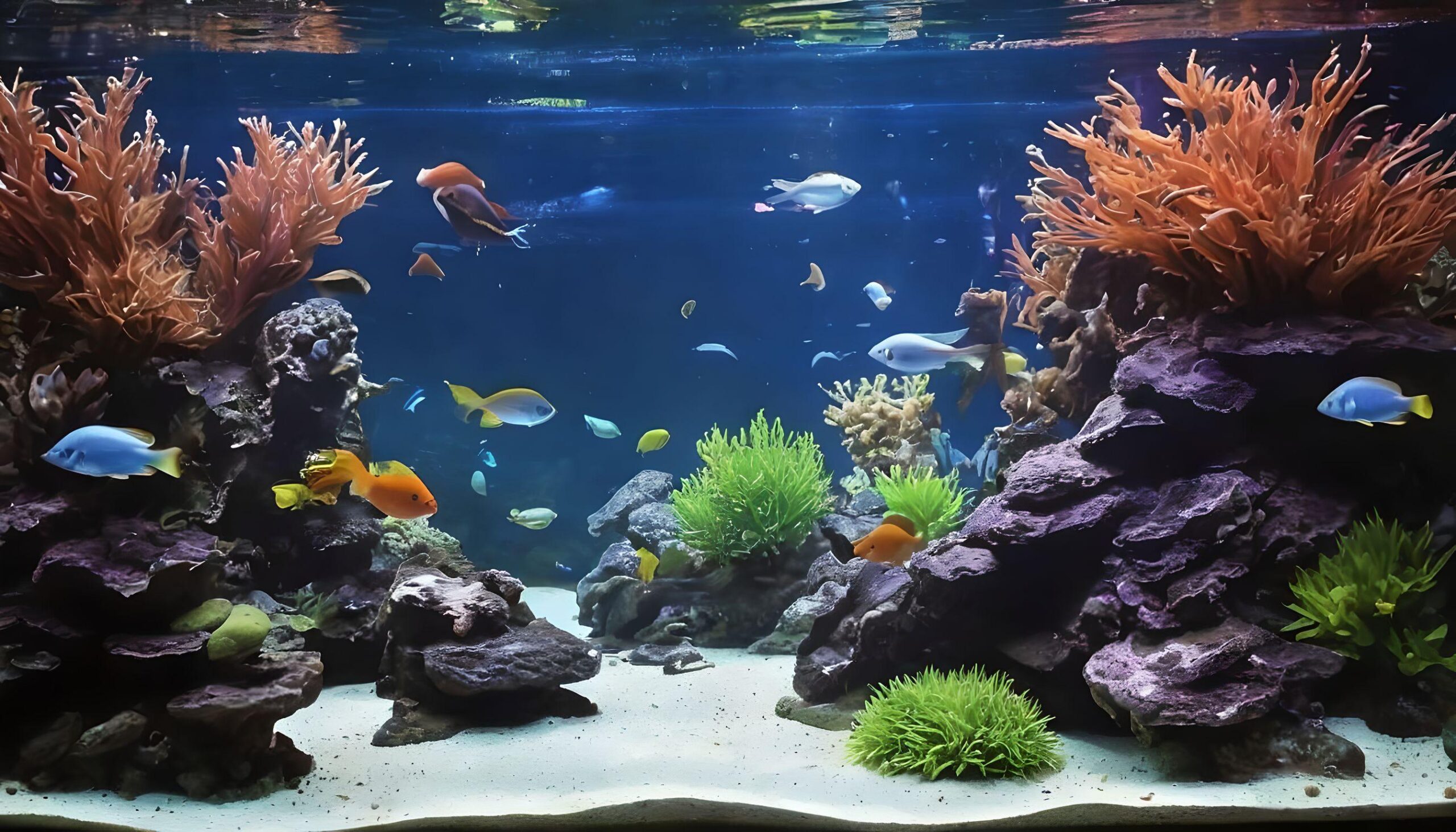Welcome to the wonderful world of fishkeeping! Creating and maintaining a thriving aquarium at home is a fulfilling hobby that requires careful planning and attention to detail. In this comprehensive guide, we'll take you through each step of the process, from choosing the right equipment to maintaining water quality and introducing fish.
1. Planning Your Aquarium:
- Determine the Size: Consider the available space and the type of fish you want to keep. Larger tanks provide more stability and allow for a greater variety of fish. If you plan to keep small fish, you can select a small tank of 1x1x1 ft.
- Choose the Type: Decide between freshwater or saltwater aquariums based on your preferences and experience level. For beginners, it is advisable to choose a freshwater setup as it is a bit easy and cheap.
- Research Fish Species: Learn about the specific requirements, compatibility, and behavior of fish species you plan to keep. Consider factors like temperature, pH, and tank mates.
2. Selecting Equipment:
- Aquarium Tank: Choose a tank with appropriate dimensions and material (glass or acrylic). Consider features like built-in filtration systems and lighting.
- Substrate: Select a substrate based on your desired aesthetic and plant requirements. Options include gravel, sand, and specialized plant substrates.
- Filtration System: Install a filtration system (e.g., hang-on-back, canister, or internal filter) suitable for your tank size and fish load. Include mechanical, biological, and chemical filtration components.
- Heater and Thermometer: Install a reliable heater and thermometer to maintain stable water temperature suited to your fish species.
- Lighting: Choose appropriate lighting for plant growth and fish visibility. LED lights are energy-efficient and customizable.
- Decorations: Add decorations like rocks, driftwood, and plants to create a natural and stimulating environment for fish.
3. Setting Up the Aquarium:
- Rinse Substrate: Rinse substrate thoroughly to remove debris and dust before adding it to the tank. If you are using aquarium soil, you don't need to rinse it.
- Install Equipment: Set up the filtration system, heater, thermometer, and lighting according to manufacturer instructions.
- Fill with Water: Fill the tank with dechlorinated water to the desired level. Use a water conditioner to remove chlorine and chloramine.
- Cycle the Tank: Initiate the nitrogen cycle by adding an ammonia source (e.g., fish food or pure ammonia). Monitor water parameters (ammonia, nitrite, nitrate, pH) using test kits. This is not always mandatory but it is suggested.
- Beneficial Bacteria: Introduce beneficial bacteria (commercial products or seeded filter media) to establish biological filtration and break down ammonia and nitrite.
4. Water Quality Management:
- Regular Testing: Test water parameters weekly and after major changes (e.g., water changes, new fish additions). Maintain stable pH, ammonia (0 ppm), nitrite (0 ppm), and nitrate levels (<20 ppm).
- Water Changes: Perform regular partial water changes (10-20% weekly) to remove accumulated waste and replenish essential minerals.
- Gravel Vacuuming: Use a gravel vacuum to clean debris and waste from the substrate during water changes.
5. Introducing Fish and Plants:
- Acclimatization: Acclimate new fish to the tank environment by floating their bag in the water and gradually adding tank water over 15-30 minutes.
- Quarantine: Quarantine new fish for 2-4 weeks in a separate tank to monitor for diseases and ensure they are healthy before introducing them to the main tank.
- Plant Care: Provide appropriate lighting, CO2 supplementation (if necessary), and nutrient supplementation for planted tanks. Trim and remove dead or decaying plant material regularly.
6. Ongoing Maintenance:
- Feeding: Feed fish a balanced diet suitable for their species and avoid overfeeding to prevent water quality issues.
- Algae Control: Monitor and control algae growth through proper lighting, nutrient management, and algae-eating fish or invertebrates.
- Equipment Maintenance: Clean and maintain filtration equipment, heaters, and other devices regularly to ensure optimal performance.
- Disease Management: Monitor fish behavior and appearance for signs of illness. Treat diseases promptly with appropriate medications and quarantine affected fish if necessary.
Conclusion:
Creating and maintaining a home aquarium is a rewarding and educational experience that requires dedication and ongoing care. By following these steps and staying attentive to your fish's needs, you can enjoy a thriving aquatic ecosystem in your own home.
Below is a video of basic tank setup for Betta.
Happy fishkeeping!

